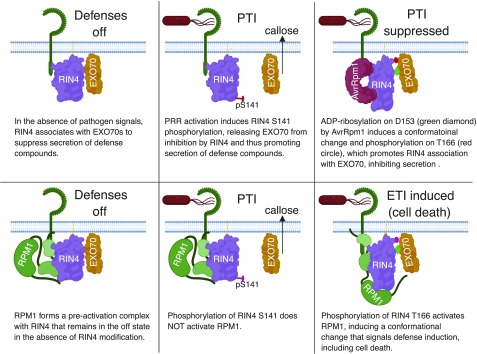Figure 7.
Model for How ADP-Ribosylation of RIN4 Affects Resistance and Susceptibility.
Perception of pathogens by a cell surface receptor promotes phosphorylation of AtRIN4 S141 (Chung et al., 2014), which decreases the affinity of AtRIN4 for EXO70. Release of EXO70 promotes secretion of defense compounds such as callose. To combat this, P. syringae injects AvrRpm1, which phosphorylates AtRIN4 on Asp-153, promoting a conformational change in AtRIN4. This then enables phosphorylation on Thr-166, which enhances the affinity of AtRIN4 for EXO70, thus suppressing secretion of defense compounds. To guard against such suppression, plants have evolved NLR proteins that sense RIN4 modification. In this example, phosphorylation on Thr-166 activates RPM1. ETI, effector-triggered immunity; PTI, Pattern recognition receptor (PRR)-triggered immunity.

